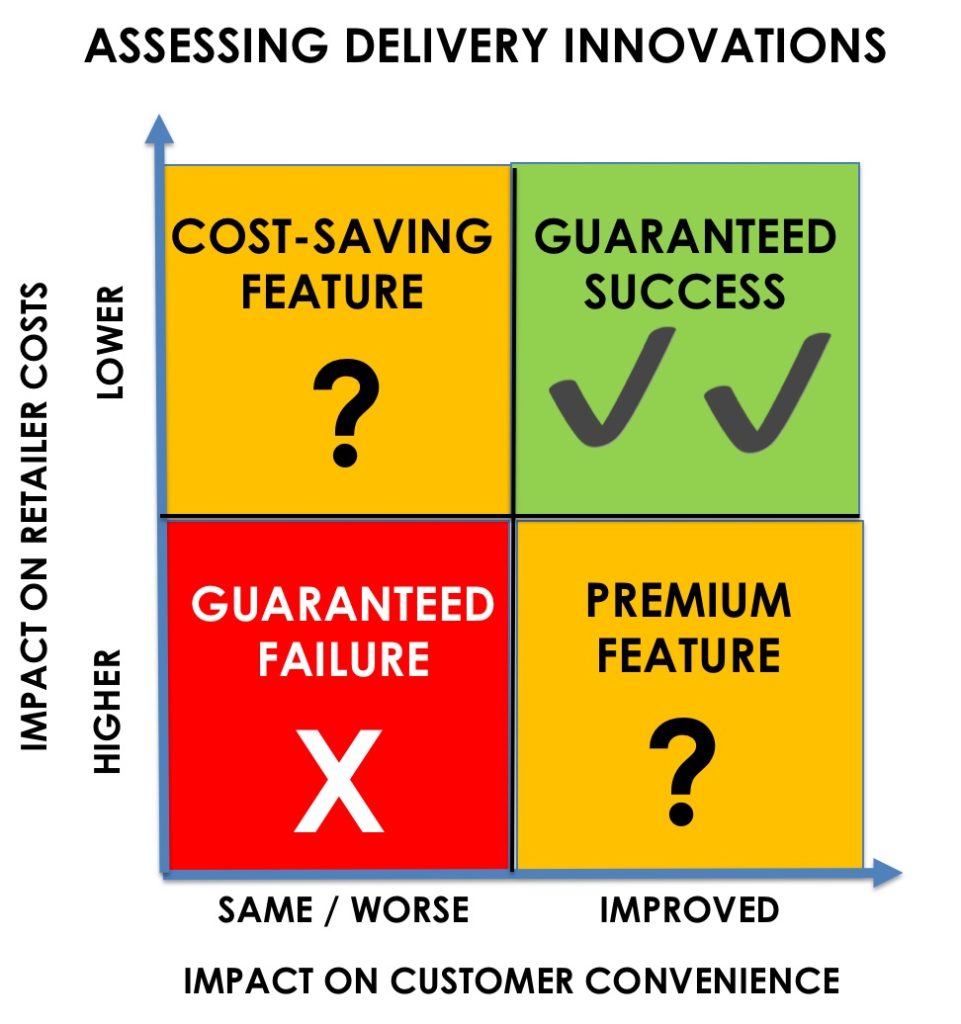 Amazon has received a lot of publicity for its latest home-delivery innovation in the US. Prime customers with compatible digital locks can now have packages delivered directly to to the trunk of their parked car.
Amazon has received a lot of publicity for its latest home-delivery innovation in the US. Prime customers with compatible digital locks can now have packages delivered directly to to the trunk of their parked car.
As with most things Amazon, the move has attracted positive and negative reviews.
- Evan Schuman of Computer World believes this “is not a good idea” citing security risks from thieves breaking into car trunks.
- James McQuivey of Forrester was enthusiastic, saying, “This goes back to one-click ordering. The company knows that the less friction you have, the better.”
Faced with these conflicting opinions, how might we assess whether in-car delivery is a gimmick or a game-changing innovation?
I will illustrate this using a framework based on two keys for successful delivery innovation – customer convenience and retailer costs.

The horizontal axis categorises a delivery innovation according to its impact on customer convenience:
- On the right side are innovations which make life more convenient for some or all customers.
- On the left side are innovations which either have no impact or make life less convenient.
The vertical axis categorises a delivery innovation according to its impact on retailer costs:
- A lower cost innovation improves the retailer’s efficiency.
- A higher cost innovation pushes up the retailer’s cost of operations.
Any new delivery innovation will fall into one of the four quadrants. How do they compare?
- A bottom-left quadrant innovation is guaranteed to be unsuccessful, since both the customer and the retailer are worse off.
- A bottom-right quadrant innovation may be successful if the customer is willing to pay more for the improvement than it costs the retailer to offer it. Example: introducing same-day delivery for a premium price.
- A top-left quadrant innovation may be successful if the customer is willing to trade a lower price for reduced convenience. Example: Coles Online offers customers an extended six-hour delivery slot for a reduced delivery fee.
- A top-right quadrant innovation is guaranteed to be successful, since both the customer and retailer are better off.
I believe in-car delivery is a top-right quadrant innovation – guaranteed to be successful – and will evolve into a completely new class of delivery option. Why do I say that?
- From the customer’s perspective, the car trunk is a de facto delivery locker. It reduces the need to be physically present to take a delivery. It also potentially eliminates the chance of a failed delivery (also known as being “carded”).
- From the retailer’s perspective, the ability to deliver to the car trunk increases the chances of a successful first-time delivery. As most courier companies know, failed deliveries are often the biggest cause of wasted time and effort.
And what of the security concerns? Without wishing to downplay these, it is not too hard to imagine some simple steps that will reduce the risk, for example by capping the value of in-car deliveries or increasing the security features of car trunks.
By reducing the need to leave deliveries on porches, in-car deliveries may even improve security.
And for Australia? Although Amazon Prime is not yet live, I believe this innovation has huge potential for our market because the rate of failed deliveries is much higher than that of most other countries. Sign me up please, Jeff!
Jonathan Reeve is a consultant and author who helps businesses to master the art of e-commerce fulfilment. He has worked in retail businesses on three continents for over 17 years and was part of the team that developed the operating model for Tesco.com.
Jonathan is the author of Retail’s Last Mile: Why Online Shopping Will Exceed Our Wildest Predictions. He can be reached at jr@jonathanreeve.com.au.





